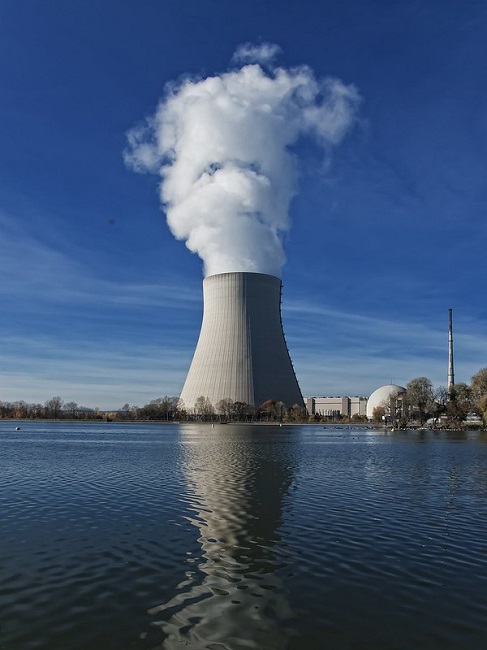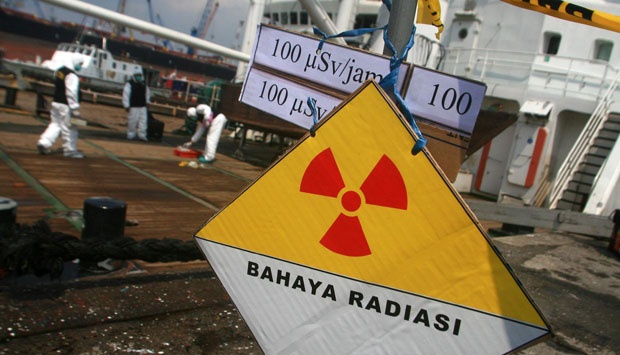Building public trust will be key to making nuclear power a reality in Indonesia
Building public trust will be key to making nuclear power a reality in Indonesia
Yogi Sugiawan and Shunsuke Managi
The quest for economic growth cannot be detached from issues of energy security and environmental deterioration. The consumption of energy is essential for economic activity and increased quality of life, but its generation can exert great pressure on the environment, either through pollution or depletion of natural resources. This is the classic dilemma of designing sustainable energy policy – improved access and increased capacity are often accompanied by potential reductions of well-being and negative environmental impacts.
This trade-off is evident in Indonesia. Over the last decade, the economy has grown at an average rate of 5.4 per cent per year, with demand for electricity increasing at an annual average rate of 6.2 per cent over the same period. Unfortunately, this has been followed by an increasing trend of carbon dioxide emissions from fossil fuel combustion with an average growth rate of around five per cent per year, from 345.1 million tons in 2006 to 563.3 million tons in 2016.
Our recent work assessing the sustainability of global energy consumption suggests that despite beneficial impacts on production and human capital, the current pattern of Indonesia’s energy consumption has led to a substantial erosion of the country’s stock of natural resources, which in turn is hindering the pace of inclusive wealth growth. In the last two decades, the stock of per capita natural resources in Indonesia has been depleted by more than 40 per cent. If this trend continues, by 2050 the stock will fall by over 70 per cent.
To achieve more sustainable development, energy and environmental policies need to be implemented in such a way as to maximise economic growth without reducing the stock of natural resources. The Indonesian government has signalled a strong commitment to lowering carbon emissions by investing in more new and renewable energy sources, setting an official goal of sourcing 23 per cent of its energy from renewables by 2025. However, as discussed by Dr Abidah Setyowati elsewhere in this edition, there are numerous logistical, political and economic challenges that stand in the way.
Our own empirical study on the income-emissions relationship in Indonesia found that decarbonisation of the economy is not impossible. However, the turning point from a carbon-intensive economy to a low carbon one was predicted to occur at a relatively high per capita income level of US$7,729. 2019 per capita income was US$4,136, indicating there is still some way to go to close the gap. This finding is reflected in the fact that despite the government’s ambitious goals, the share of renewable energy in the national electricity mix has remained stuck at around 11 per cent and prospects for rapidly increasing that share remain dim.
Public attitudes toward nuclear power
As there are substantial barriers to a rapid transition from fossil fuels to renewable energy, the potential of nuclear power to address the above mentioned policy dilemma deserves careful consideration. Despite intense and long-running debate about nuclear power, it has the potential to increase generating capacity while reducing carbon emissions.
Indonesia began developing experimental nuclear reactors in the 1960s, and in the 1970s undertook a pre-feasibility study with the Italian government to see if it could be scaled up. This was followed by a more comprehensive feasibility study on Java’s Muria Peninsula in 1989. That study recommended a site at the tip of the peninsula as the best candidate for a nuclear power plant. A second feasibility study, completed in 2013, recommended two potential sites on Bangka Island off Sumatra.

These feasibility studies hint at the long history of interest in developing Indonesia’s nuclear power potential. However, there remain many practical challenges, particularly related to stakeholder involvement. In 2009 an Integrated Nuclear Infrastructure Review conducted by the International Atomic Energy Agency (IAEA) concluded that although there had been ‘good progress in the development of the national infrastructure in many areas’ the ‘activities for stakeholder involvement will in particular require significant improvement’. A lack of stakeholder involvement in the decision- making process can create public distrust that may eventually lead to public opposition. This could be one reason why nuclear power has yet to become a reality, despite long-running interest in the idea.
BATAN (Indonesia’s National Nuclear Energy Agency) has undertaken numerous efforts to encourage greater public involvement in the decision-making process. It conducted public opinion polls in 2010 and 2011 as part of its nuclear science and technology dissemination project. The surveys were conducted in 22 cities in seven provinces on Java and Bali, involving more than 5000 respondents. The 2010 survey revealed that almost 60 per cent of respondents had favourable views of nuclear power, approximately 26 per cent were against it, and the rest were ambivalent. The 2011 survey, which was conducted after the Fukushima nuclear accident, showed that public support had declined to 49.5 per cent. Building up public trust in nuclear power, and in authorities to develop it safely, is thus key to the successful implementation of the technology.
Using this data, we developed a model to investigate determinants of public acceptance of nuclear power in Indonesia. Compared to knowledge about nuclear technology or trust in managing authorities, the strongest driver of support for nuclear power was concern about energy security. These findings mirror the IAEA’s conclusion that more work needs to be done in increasing stakeholder involvement, and we found this can be done by educating the public about nuclear power and increasing trust in public authorities, including implementing agencies like BATAN.
In Indonesia’s case, each level of government is best suited for a particular role. Local government is best suited for increasing social acceptance by encouraging and facilitating the involvement of impacted communities in developing proposed nuclear power projects. The ideal role is as a ‘hub institution that plays an important role in translating the national energy policy into local wisdom’. This will reduce the communication gap between stakeholders and ensure both equity and fairness in every stage of the decision-making process.
Regarding the socio-political acceptance of nuclear power, the role of nuclear energy authorities is critical, particularly in providing comprehensive information and educating the public about proposed projects. It is especially important that the authorities communicate not only the beneficial impacts of nuclear power but also the possible risks and downsides. We found the role best suited for the central government was creating the policy and regulatory architecture necessary for market and political acceptance, but leaving the community outreach and public awareness efforts to local and implementing authorities.
Nuclear power as a last resort
Like all countries, Indonesia seeks to balance economic growth with sustainability. When it comes to energy generation, transitioning away from fossil fuels and toward renewable sources is perhaps the best way to accomplish that. However, the transition in Indonesia is likely to be slower than many would like, requiring policymakers to consider other options that can reduce carbon emissions such as nuclear power.

Nuclear power has long been a dream for some in Indonesia, but is the country ready for it? The development of national infrastructure for such an undertaking has made significant progress over the years, but more work needs to be done to increase stakeholder engagement and public trust, for instance by educating the public, increasing stakeholder involvement in the decision-making process and creating an overall political and regulatory environment that will allow nuclear power to develop safely and effectively.
The Indonesian government should consider nuclear power as part of its efforts to reduce carbon emissions. Understandably, it may be hesitant to tackle the substantial financial, political, social and technical challenges, unless it is exceptionally necessary to do so. However, if we consider the pattern of energy consumption in Indonesia, which is strongly associated with carbon emissions and loss of natural resources as well as the slow pace of renewable energy uptake, it is not an exaggeration to say this last option is indeed urgent.
Nevertheless, implementation must be carried out cautiously. The decision-making process must carefully weigh not only the beneficial impacts of nuclear energy on carbon emissions and energy security but also the potential risks. This is a process that needs to be carried out in a collaborative manner through education and outreach efforts that prioritise communication and encourage the participation of stakeholders at every level. Regulatory agencies, as well as local and national governments, all have a role to play. If nuclear power is to become a reality in Indonesia, it will require an inclusive and transparent multi-pronged effort in which the risks and rewards are clearly articulated so that collective decisions can be reached based on all the facts. In the absence of that, nuclear power in Indonesia may continue to be a dream deferred.
Yogi Sugiawan is a Policy Analyst at the Planning Bureau of the National Nuclear Energy Agency of Indonesia (BATAN). Shunsuke Managi is Distinguished Professor and Director of the Urban Institute, Kyushu University.
